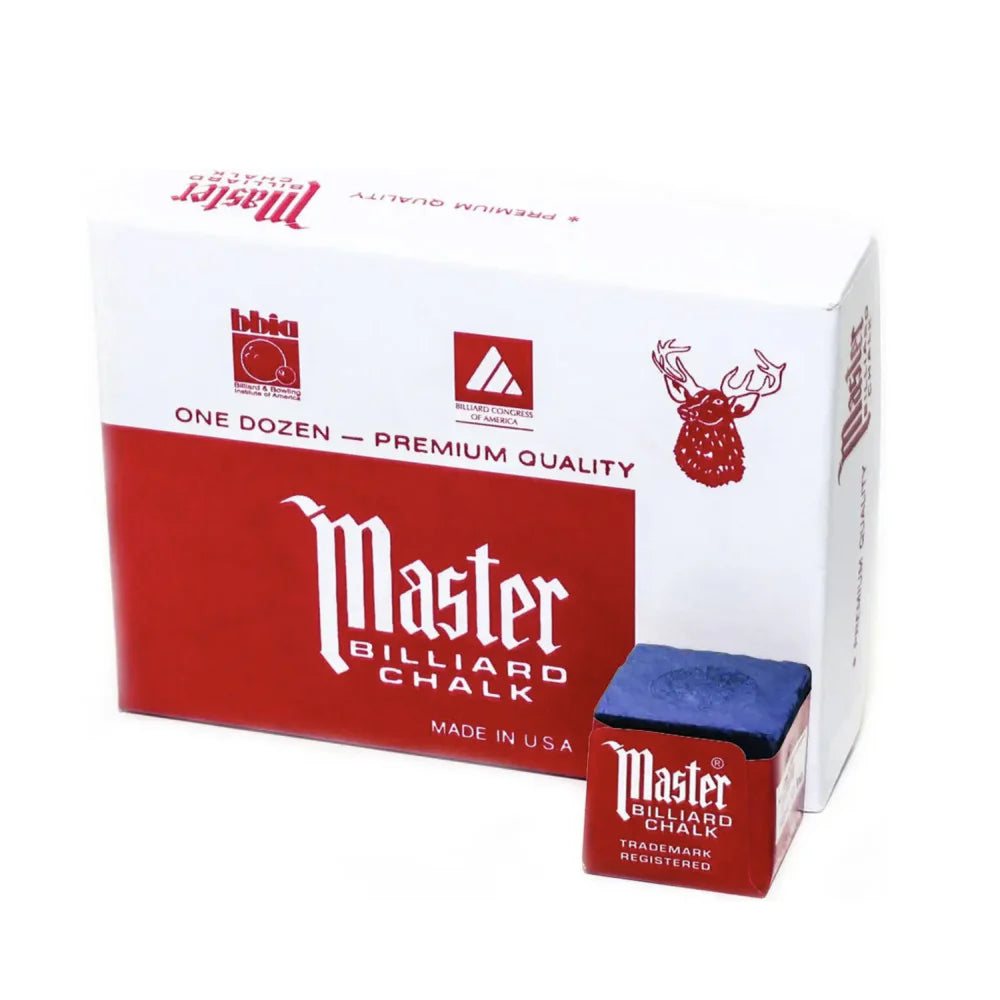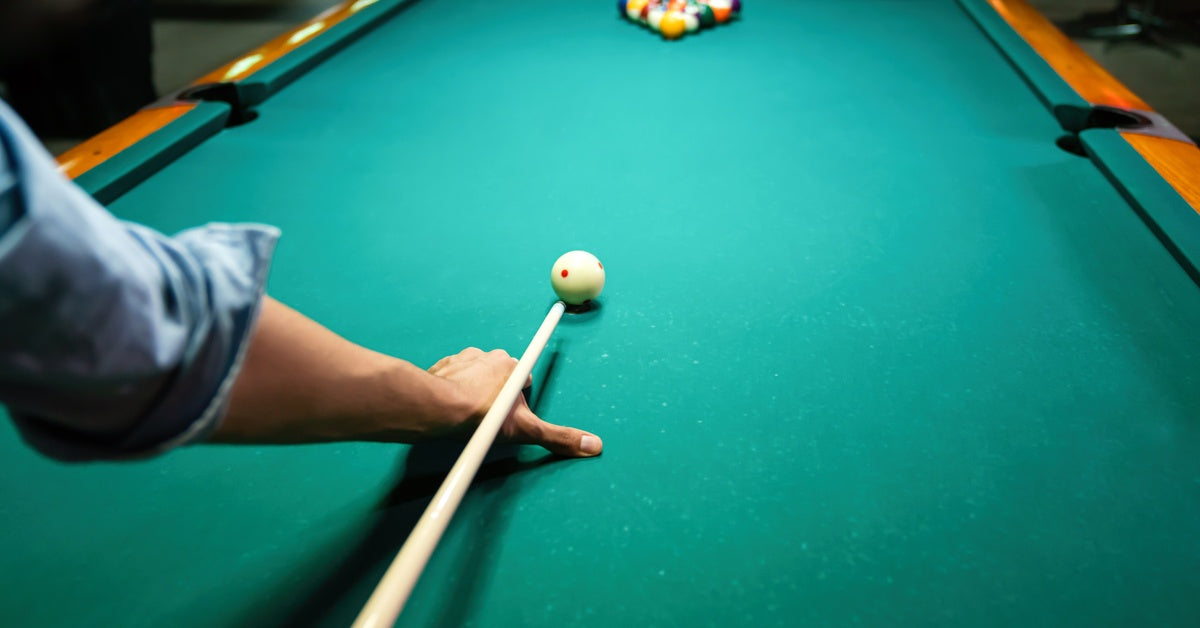Before you ever consider buying a pool cue, you must first understand its anatomy. Each component serves a specific purpose, influencing everything from your stroke mechanics to shot accuracy. So before you start searching for the perfect cue, let’s break down each of the essential parts that make up your pool cue, so you can make a confident decision before you check out.
The Tip: Your Point of Contact
The tip represents the most crucial connection point between you and the cue ball. This small component dramatically influences your ability to apply spin, control speed, and execute precise shots.
Material matters significantly. Leather tips offer excellent grip and feel, while phenolic tips, made from compressed layers of fabric and resin, provide durability and consistency. Each material responds differently to chalk and wear patterns.
On top of that, hardness levels determine your playing experience. Soft tips (durometer rating below 70) compress more on contact, allowing maximum spin transfer and enhanced feel. Medium tips (70-80 durometer) balance control with durability, making them ideal for most players. Hard tips (above 80 durometer) offer precision and longevity but require more skill to generate spin effectively.
The Ferrule: The Shock Absorber
Positioned directly below the tip, the ferrule holds the tip in place and absorbs impact forces that would otherwise transfer to the shaft. This small ring protects your cue from damage during aggressive shots and break attempts.
Material choice affects both protection and performance. Traditional ivory ferrules aren’t very ethical anymore, but there is a suitable replacement called ivorine that you can look into. Outside of that, modern plastic ferrules provide excellent protection at affordable prices. Carbon fiber ferrules are also a great choice, delivering maximum durability while maintaining responsive feedback.
Ferrule length is something else to consider, as it influences cue ball control subtly but noticeably. Longer ferrules provide more forgiveness on off-center hits, while shorter ferrules offer enhanced precision for advanced players who consistently strike the cue ball’s center.
The Shaft: The Engine of Your Stroke
Your shaft is one of the main components of your cue. It determines how energy transfers from your stroke to the cue ball. This part of the cue affects everything from deflection to feedback sensitivity.
Wood versus composite construction creates distinct playing experiences. Maple shafts offer a traditional feel with natural flex characteristics. For example, ash shafts provide slightly more stiffness with visible grain patterns. However, composite shafts eliminate warping concerns while delivering consistent performance in varying humidity conditions.
Taper design is worth noting since it significantly influences stroke mechanics. Pro tapers maintain a consistent diameter for extended lengths, providing stability through longer bridges. Then there are conical tapers that gradually increase in diameter from tip to joint, offering different feel characteristics as your grip position changes.
You can take things a step further with shaft customization that allows for personal preference accommodation. Diameter adjustments of just 0.5mm can dramatically change how the cue feels in your hands, making this specification worth careful consideration.
The Joint: The Connection Point

The joint system connects your shaft to the butt, creating a unified playing instrument. This connection point affects both convenience and performance characteristics.
Joint types offer different advantages. Wood-to-wood joints provide a more traditional feel with seamless energy transfer, while stainless steel joints offer durability and precise fitting tolerances. While not necessary, quick-release mechanisms prioritize convenience for players who frequently transport their cues.
Joint design influences feedback transmission. Solid connections deliver maximum vibration transfer, allowing you to feel every aspect of ball contact. Some players prefer this sensitivity, while others find it distracting during extended play sessions.
The Wrap: Your Grip Support
The wrap area serves as your primary point of contact with the cue, making comfort and control essential considerations here. Over time, this will have long-term impacts on how well you play.
Wrap materials cater to different preferences and conditions. Leather wraps offer traditional luxury with excellent moisture absorption. You can also try linen wraps, which provide superior grip security, especially beneficial for players with sweaty hands. Some prefer wrapless designs, though, as these showcase beautiful wood grain while offering easy maintenance.
Player preference varies significantly based on hand moisture levels and playing style. Tournament players often prefer consistent wrap materials that perform identically regardless of environmental conditions.
The Butt: The Foundation
The butt section creates the foundation of your cue’s balance and aesthetic appeal. That means you need to pick a cue that has the structural components needed to work together for optimal balance. The forearm of the butt provides primary weight distribution, while the end cap allows fine-tuning of overall weight and balance point.
The main thing to keep in mind is that the balance point location affects stroke mechanics significantly. Most players prefer a balance point between 18 and 20 inches from the butt end, though personal preference varies by stroke style and physical characteristics.
While not as critical, aesthetic customization transforms functional tools into personal statements. Inlays ranging from simple dots to intricate artwork allow individual expression. Different wood species create unique visual characteristics while maintaining structural integrity.
The Bumper: The Protector

Though often overlooked, the bumper is the final part of every pool cue, so we’ll cover it as well. This piece serves essential protective functions, helping to extend your cue’s lifespan considerably.
Purpose extends beyond simple protection. Quality bumpers prevent damage when cues contact floors, walls, or cue racks. They also provide some additional cushioning during storage and transport.
Rubber remains the preferred material for its combination of durability, shock absorption, and replacement convenience. When bumpers wear out, replacement costs are minimal compared to repairing damaged butt caps.
Which Parts Matter Most for Your Purchase
When selecting your pool cue, it’s critical to prioritize components that directly impact your playing experience. The tip deserves primary consideration since it determines your ability to control the cue ball effectively. Invest in quality tip material and appropriate hardness for your skill level.
The shaft ranks as your second priority. Wood type, taper design, and diameter significantly influence how the cue feels and performs. Consider your playing style and physical preferences when evaluating shaft options.
And finally, the butt of the pool cue is worth careful consideration since it largely contributes to the cue’s overall balance and stability. A durable, high-quality butt ensures longevity and comfort. As long as it’s well-balanced, it’ll improve your control and precision, offering a smoother playing experience.
So don’t delay any longer. Now that you know what to look for, get your new pool cue from the Cue Pros today. We have a massive selection of pool cues to choose from on our site, so take the time today to find the one that’s right for you.










